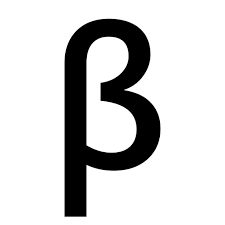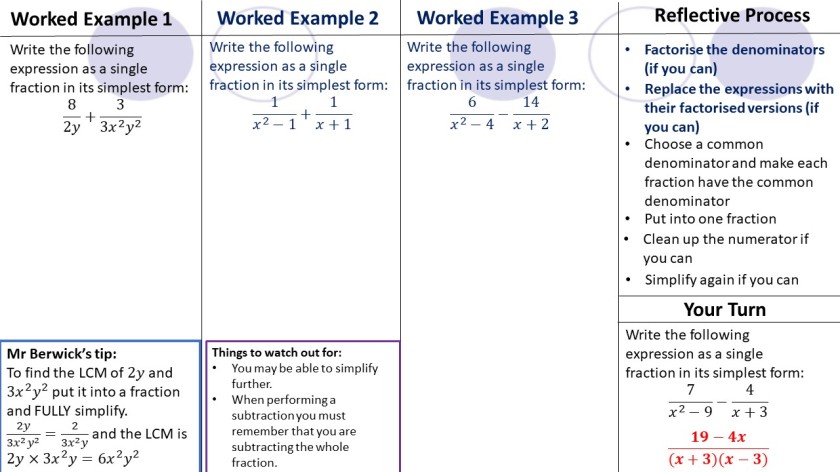So my journey into finally making a website and a blog begins!
I have recently been having a lot of questions as to how I give examples in my lessons. I am honoured to be asked about this on a regular basis and am now excited to share all the types of examples I use for each topic with you.
It all started back in my training year (not that long ago) when I picked up the book “How I wish I’d taught maths” by the wonderful Craig Barton. I was fascinated by the simple, but incredibly effective method of example-problem pairs. These problem pairs became a regular occurrence in all of my lessons, however, this quickly got a little obsessive and I just thought that this was the answer to everything. I did not pay much attention to the rest of that chapter as I thought that my prayers had been answered! Turns out that there are more ways to present examples and it really does depend on the situation. I use example-problem pairs, supercharged worked-examples, examples by fading and supercharged examples with fading (my favourite).
Example-problem pairs are relatively easy to explain. They involve splitting the board into two with a fully worked example on the left of the board and a question on the right side of the board that students do to test whether they have grasped it or not. I often get students to be completely silent and refrain from answering any questions when I am going through the example. If I allow questions, then this interrupts the flow of me giving the example and can create misconceptions. Students copy the worked example into their books once I have fully explained it. I then get them to do a question from the right side of the board on their mini whiteboards. This is fantastic for AFL and discussing misconceptions that students have. I use example-problem pairs for when I am doing processes which are not particularly long. I sometimes do the process of giving an example followed by them doing a question twice. I like to cover all the situations. An example of an example-problem pair is given below.
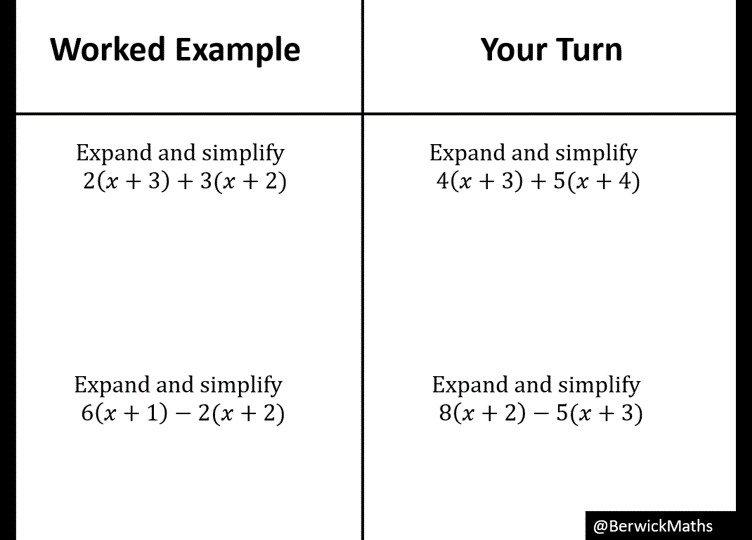
Supercharged worked examples involve almost the same thing as an example-problem pair, but we allow students to reflect on what they have done. I use this presentation method quite a lot with A-level groups. I even use this method for problem solving questions with my GCSE group. We write in the middle column about why we are doing each necessary step. This has had very positive results as the class progresses together in wider thinking of mathematical concepts. Here is a couple of examples of this below.
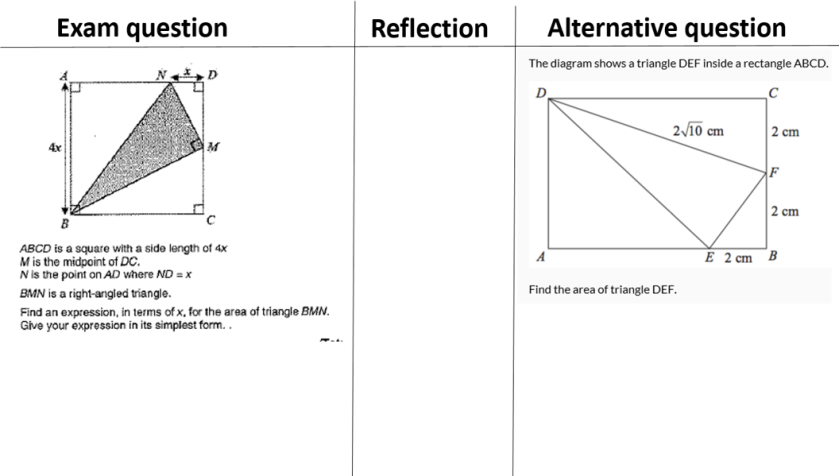
Examples by fading involve presenting a fully complete example on the board and then another example, but this time with one step removed. The number of blanks is increased with each following example until there is just the problem left for the students to solve. Simple but impactful! In Craig’s book he references the work and evidence of Renkl and Atkinson towards this method. It is amazing to think that this research was actually written up in 2003, but not many teachers are taking note of this! I tend to use these with questions that involve a few distinct steps.
I have been presenting examples using these three ways for my training year and most of my NQT year, but I have always had the thought “Can they be better?”. Turns out that I think they can. The combination of supercharged examples and examples by fading has proved to be a big hit with students. You are probably thinking “I want an example of how this can be achieved” so here is one below.
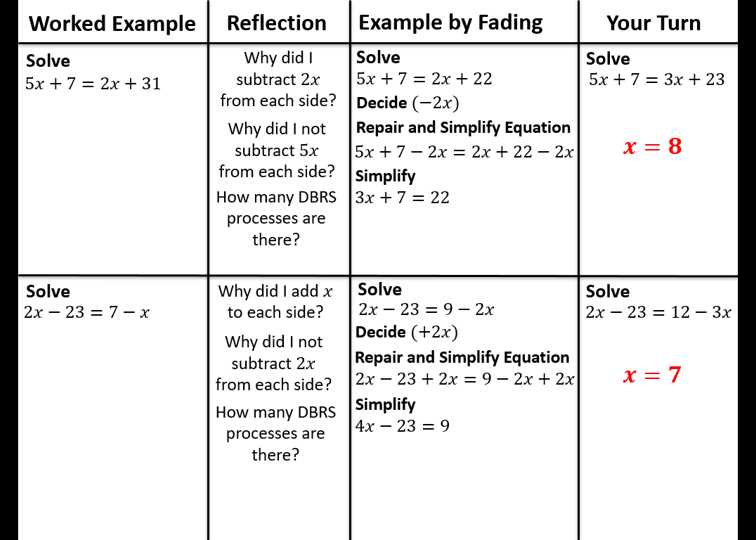
Supercharged with fading template
This method allows all students to understand how to solve linear equations with unknowns on both sides of the equals sign, whilst allowing deeper thinking. I start from the top left and work across. Rather than me just telling students how to do a question like this, I give them chance to reflect and think about why we have done something in the first place to develop their connections with maths. Once they have thought about it a little and we have discussed it as a class, I move on to an example by fading so that I can pick up any students who just need that extra boost of confidence. I then get them to do the question under the title of “Your turn” for an understanding check. I then do exactly the same with the bottom example. I use this presentation method with topics that have a lot of steps within questions. As you can imagine, this is used a lot in my algebra lessons.
My hope is that you will find this website useful. I will be building this website with more and more examples for each topic, as well as exercises that involve the use of variation theory. Please tell me what you think on twitter by tagging me @BerwickMaths. If you would like to contribute to this website, then please use the templates below the pictures and send it through twitter!
